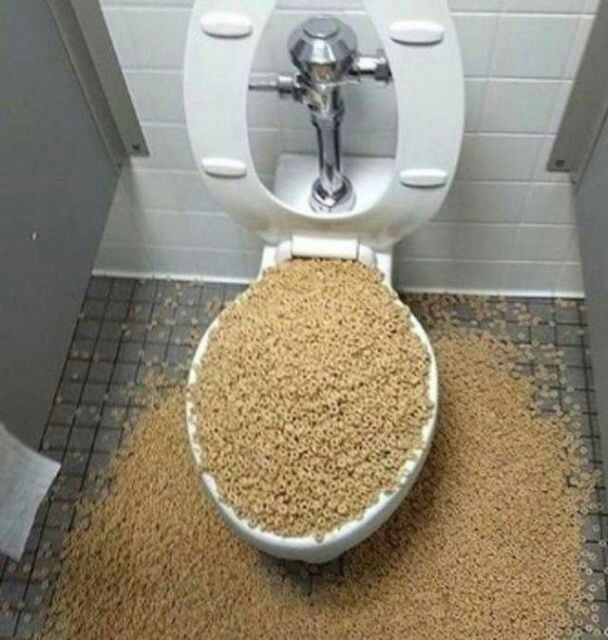Are You Capable to Dispose of Food in the Toilet?
Are You Capable to Dispose of Food in the Toilet?
Blog Article
The article author is making a number of great annotation on What Can Happen If You Flush Food Down the Toilet? as a whole in this great article down the page.

Intro
Many individuals are typically confronted with the predicament of what to do with food waste, especially when it involves leftovers or scraps. One common inquiry that develops is whether it's all right to purge food down the commode. In this short article, we'll delve into the reasons why individuals might think about flushing food, the effects of doing so, and alternate approaches for correct disposal.
Reasons why individuals could consider flushing food
Lack of understanding
Some people may not be aware of the potential harm triggered by purging food down the commode. They might wrongly believe that it's a harmless technique.
Comfort
Flushing food down the bathroom may appear like a fast and very easy solution to getting rid of undesirable scraps, especially when there's no neighboring trash bin available.
Idleness
In some cases, individuals might just pick to flush food out of large idleness, without thinking about the effects of their activities.
Repercussions of flushing food down the commode
Ecological influence
Food waste that ends up in waterways can add to pollution and harm water communities. Additionally, the water used to flush food can strain water resources.
Pipes issues
Purging food can cause stopped up pipelines and drains pipes, triggering expensive plumbing repairs and hassles.
Sorts of food that should not be flushed
Coarse foods
Foods with coarse structures such as celery or corn husks can get entangled in pipes and trigger obstructions.
Starchy foods
Starchy foods like pasta and rice can absorb water and swell, resulting in clogs in pipes.
Oils and fats
Greasy foods like bacon or food preparation oils ought to never ever be purged down the commode as they can strengthen and create blockages.
Correct disposal methods for food waste
Making use of a waste disposal unit
For homes equipped with garbage disposals, food scraps can be ground up and flushed through the pipes system. Nevertheless, not all foods are suitable for disposal in this fashion.
Recycling
Certain food packaging products can be reused, reducing waste and minimizing environmental impact.
Composting
Composting is an environment-friendly way to throw away food waste. Organic products can be composted and utilized to improve dirt for horticulture.
The importance of appropriate waste management
Reducing environmental damage
Proper waste monitoring techniques, such as composting and recycling, help minimize contamination and maintain natural deposits for future generations.
Securing pipes systems
By preventing the method of flushing food down the commode, property owners can prevent costly plumbing repair work and keep the integrity of their pipes systems.
Final thought
Finally, while it may be appealing to flush food down the toilet for ease, it is necessary to understand the potential consequences of this activity. By embracing correct waste monitoring methods and throwing away food waste responsibly, people can contribute to much healthier pipes systems and a cleaner atmosphere for all.
FLUSH FOOD DOWN THE TOILET?
FLUSHING FOOD CAN CAUSE BLOCKED DRAINS IN YOUR HOME
All of the plumbing fixtures in your home are connected to the same sewer pipe outside of your home. This outdoor sewer pipe is responsible for transporting all the wastewater from your home to the Council sewer mains. Even small pieces of food that go down the kitchen sink can cause problems for your sewer. It should therefore be obvious that flushing larger bits of food, such as meat, risks a clog in either the toilet itself or the sewer pipes. Flushing greasy food is even more problematic because oil coagulates when it cools, coating the interior lining of your pipes.
THE TOILET IS NOT A BIN
Food isn’t the only thing that people shouldn’t be flushing down the toilet. People use the toilet to dispose of all kinds of things such as tampons, makeup wipes, dental floss, kitty litter and even underwear. Water goes to great lengths to educate residents about the high costs and stress placed on wastewater treatment systems simply from people flushing the wrong stuff down the toilet. It costs taxpayers millions of dollars each year, and homeowners thousands in blocked drain repairs.
FLUSHING FOOD IS A WASTE OF WATER
Flushing food is a waste of our most precious resource - water. In June this year Level 1 water restrictions were introduced to protect water supply from drought conditions. Much of New South Wales continues to be affected by prolonged drought with recent figures revealing up to 97 per cent of the state remains in drought. Depending on whether you have a single or dual flush toilet, every single flush uses between five and 11 litres of water. In the current climate this is a huge amount of water to be wasting on flushing food that should be placed in the bin (or better yet, the compost).
https://www.jabplumbingsolutions.com.au/blog/can-you-flush-food-down-the-toilet

I discovered that blog entry on Flushing Food Down the Toilet? while perusing the web. Do you know another individual who is serious about the topic? Please feel free to promote it. Thanks a bunch for being here. Please pay a visit to our blog back soon.
Visit My Web Page Report this page